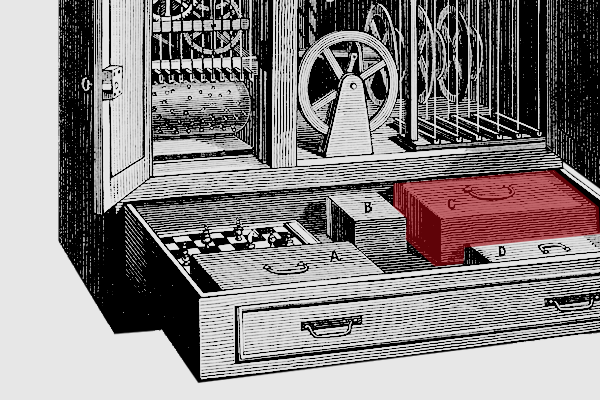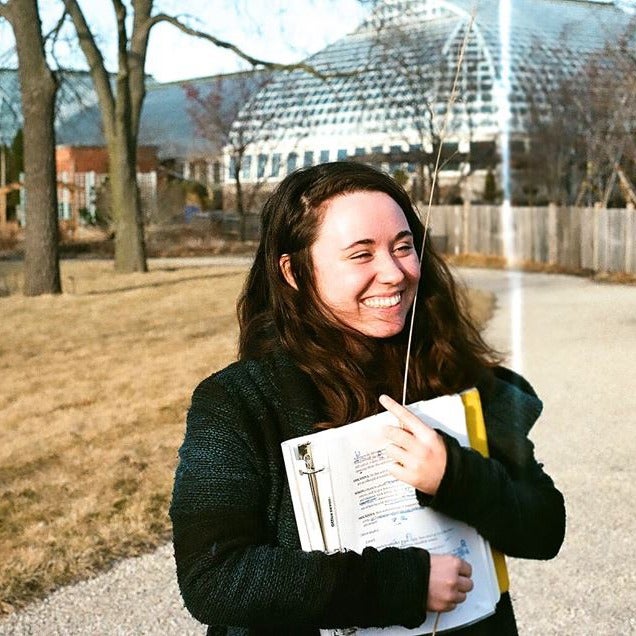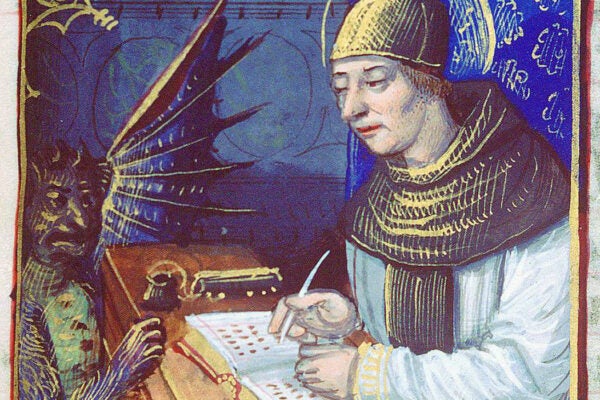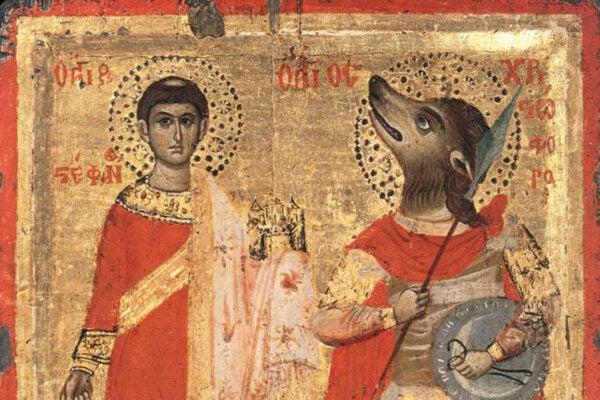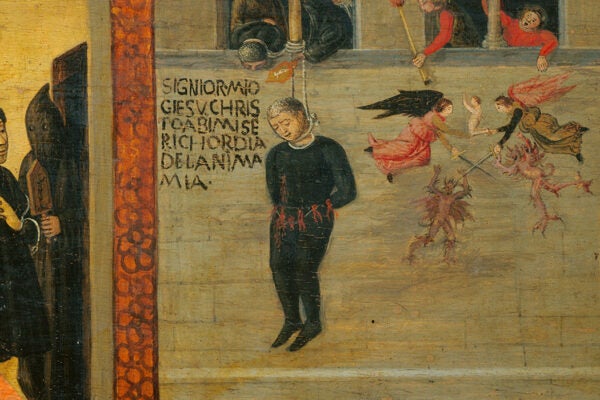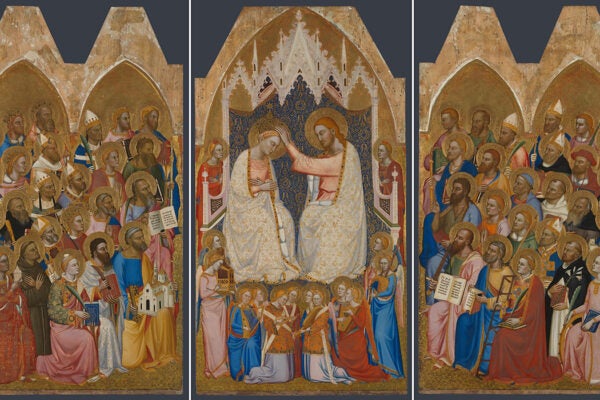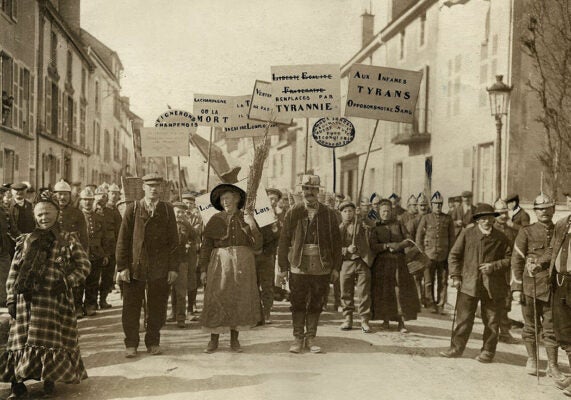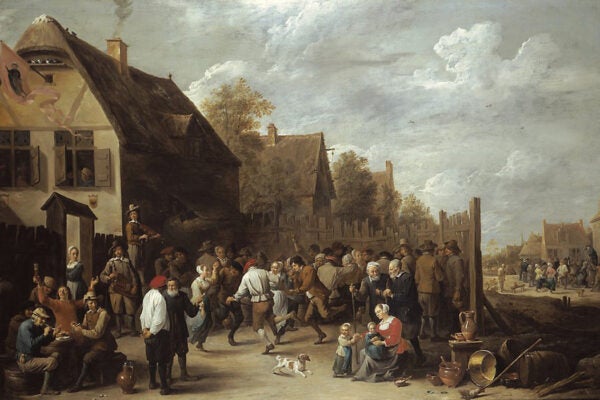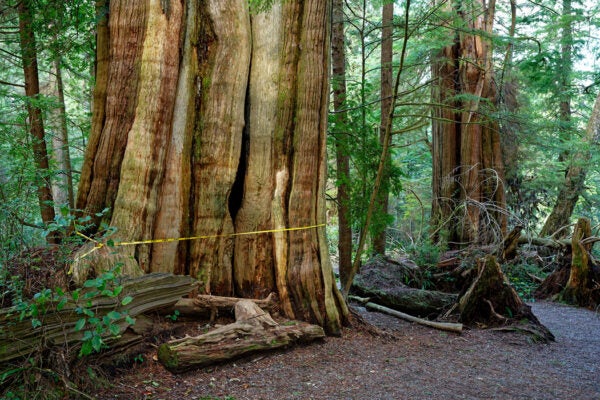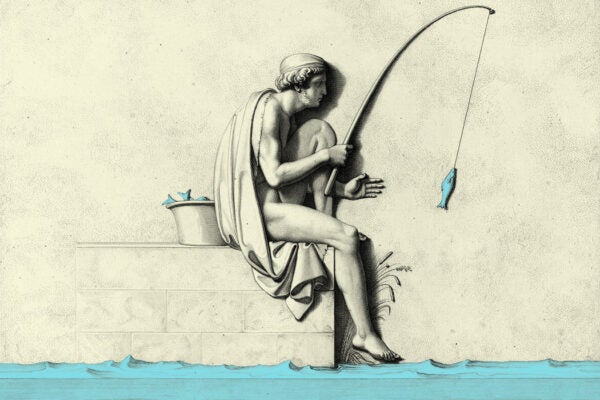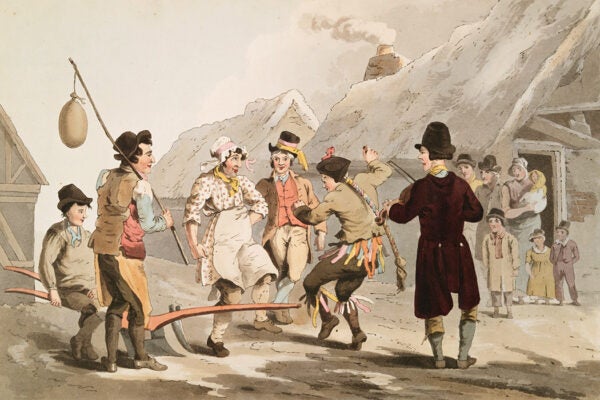Tutivillus Is Watching You
For medieval scribes, mistakes couldn’t be easily shrugged off, as Tutivillus, the stickler demon, was always looking over their shoulders.
Christopher, the Dog-Headed Saint
Although the tradition has largely faded in the Western church, Saint Christopher sported a canine head through much of Christian history.
Tavolette: Paintings to Comfort the Condemned
Charged with saving the immortal souls of the condemned, comforters held tavolette showing the Crucifixion in front of the eyes of those facing execution.
Coco De Mer: The Magical Derrière of the Sea
Once viewed as a precious item of mysterious origin, the seed of the coco do mer palm, though better understood today, remains a rare and valuable commodity.
When the Bishop Married the Abbess
When a new bishop was installed in the see of medieval Florence, he was also expected to marry—at least symbolically—the abbess of San Pier Maggiore.
Terroir Terror: The 1911 Champagne Riots
An environmental crisis and a dispute over regional boundaries sent both rioters and rivers of champagne pouring into the streets of Aube.
Hocktide: A Medieval Fest of Flirtation and Finances
The springtime holiday of Hocktide not only allowed villagers to cross social boundaries in the name of fun, it helped them raise funds for nonsecular needs.
Trees With a Secret Message
The culturally modified trees of the Pacific Northwest and Alaska bring essential stories of the past into the present.
Fish Addiction: An Ancient Greek Paranoia
An obsession with eating fish mapped onto all sorts of social anxieties, from gluttony and gambling problems to wasteful spending and licentiousness.
Plough Monday
Or, how to follow the Christmas holiday with a festival of pranks, trick-or-treating, and drunken revelry.
